About Lake Victoria
At one time, Lake Victoria was home to more than 500 species of African cichlids along with other endemic fish like tilapia which are an important food stock.
Unfortunately, Lake Victoria is in crisis caused by the introduction of the Nile perch in the 1950s and 1960s. This invasive species has completely disrupted the ecosystem and is believed to be responsible for the extinction of hundreds of species already.
Now, only a relative few species remain, struggling against the predations of the Nile perch and the changing conditions of the lake.
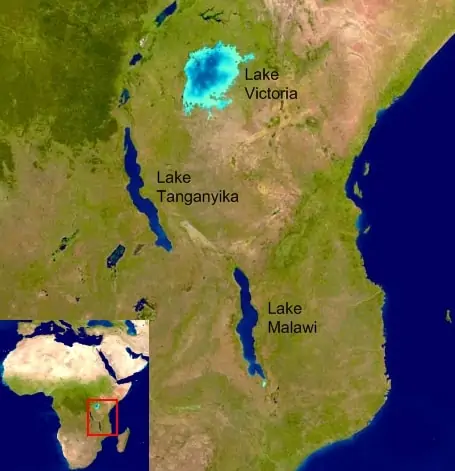
Lake Victoria is the largest lake by surface area in Africa and the chief source of the Nile River. It is situated between Tanzania, Uganda, and Kenya.
Compared with Lakes Malawi and Tanganyika, Victoria is considered a relatively shallow lake with a maximum depth of around 240’.
Natural environment
The surface water temperature of Lake Victoria varies between 70-81 °F depending on the season, with a pH that varies from 7.8 to 8.6 and a general hardness (GH) around 2-8.
For the non-chemists in the room, this means the water is alkaline and hard, though not nearly the “liquid rock” of Lake Tanganyika and Malawi.
Lake Victoria Species
Victorian cichlids tend to be moderately aggressive and territorial. In aquariums, they are often combined with various mbuna from Lake Malawi, and can coexist with many of these in a decent sized tank with plenty of cover.
Victorian “haps” are maternal mouthbrooders like many of their distant cousins in Lake Malawi, with females carrying the eggs and fry in a pouch in her throat for several weeks until they’re large enough to fend for themselves.
Popular Lake Victoria Cichlids
Haplochromis sp. #44 “Thick Skin”
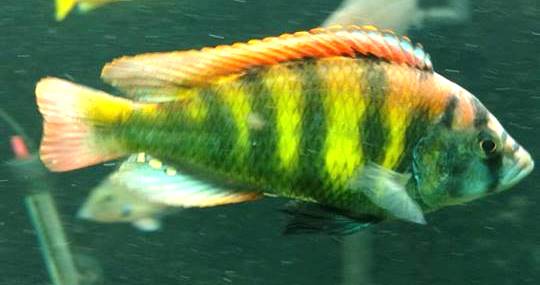
This gorgeously vibrant and fairly common Victorian cichlid is frequently mislabeled as Haplochromis obliquidens by fish stores and hobbyists alike.
In the wild, they live in shallow waters on the north and east coasts of the lake. They are quite an aggressive species and require a relatively large tank (75 gallons or so) to keep successfully. Their belligerent nature makes them a good match for many of the mbuna from Lake Malawi, and in the hobby these are their most frequent tank mates.
Both males and females develop brilliant colors that change with their moods, their age, and are especially vibrant when competing for mating rights. Males can grow to 5”, while females are more petite at 3” fully grown.
Much like mbuna, these fish do best in tanks with plenty of rocks and caves, particularly if keeping a group with multiple males.
In terms of diet, in the wild these fish are micro predators, primarily eating insect larvae. They will do well on a nutritious aquarium flake, but occasional treats of various live foods are welcomed.
Ruby Green Cichlid

Technically, the Haplochromis sp. “ruby green” is not a Victorian cichlid; it’s actually from nearby Lakes Kyoga and Nawampassa. However, it’s a close relative of the true Lake Victorian cichlids and is included here.
These are fairly small fish, with the males growing to 4”and the females to 3”. They are also one of the most peaceful of all Haps, and are very shy, especially when young.
To get full color from the males, they need to be in a species specific tank with plenty of females as potential breeding partners; in a tank with other more dominant species their colors will remain muted.
Ruby greens are very prolific spawners, with frequent broods of 20-40 fry, which is why these are relatively common in the aquarium hobby. As with many similar species, they do best in a ratio of 1 male to 2-3 females.
Kenya Gold Cichlid
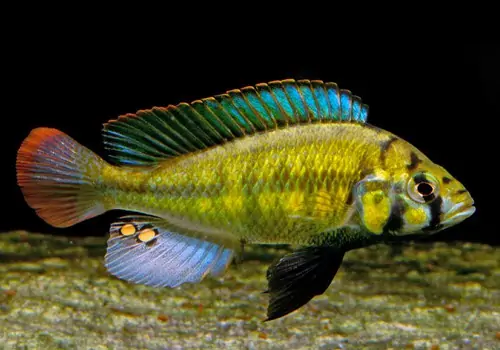
A smaller species, with fully grown males at 3.5” and the females at 2”, Haplochromis sp. “Kenya Gold” is a peaceful fish with attitude.
These charmers can be kept in relatively peaceful community tanks successfully, but can also hold their own against more territorial Haps and mbuna. Multiple males are less of a problem with this species than with many others, and often several males will achieve their full potential color without any accompanying homicidal tendencies that can be observed with more aggressive species.
Pundamilia nyererei
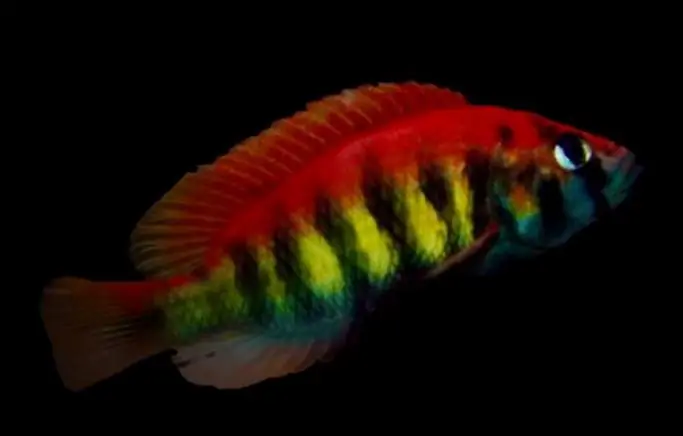
This moderately aggressive species from the southern end of Lake Victoria along the Tanzanian coastline is among the most colorful of Victorian cichlids.
The males grow to about 4” with the females a bit smaller, and the male displays a distinctive coloration as seen above; a bright orange dorsal fin, with bright red or orange across their upper half. The lower half has 5 to 8 black vertical bars on a yellow or greenish yellow background.
Males of this species are constantly trying to breed, and will chase females all over the tank. They will also battle intensely with other males for breeding rights, which often ends up with only one male per tank.
Christmas Fulu
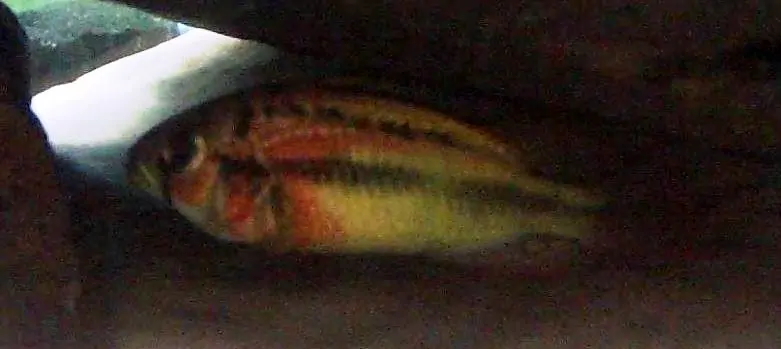
This Lake Victorian cichlid’s scientific name is Xystichromis phytophagus, which is far too much of a mouthful for me. Their common name, on the other hand, derives from the male’s distinctive red and green coloration, clearly reminiscent of Christmas colors.
Typical of Haps, Christmas Fulu’s top out at 4 ¼” for males and 3.5” for females. For a small fish, they are quite aggressive, particularly to other males of their species.
This species is primarily vegetarian, subsisting mostly on algae.
The beautiful Christmas Fulu is already considered extinct in Lake Victoria, but fortunately still exists in the wild in nearby Lake Kanyaboli. Most stock available to hobbyists comes from captive breeding.
Final Thoughts
Cichlids from Lake Victoria and surrounding areas are beautiful and fascinating fish.
They range in temperament from very peaceful to quite aggressive. The more aggressive species can make wonderful and different accents to an mbuna tank, while the more peaceful could be considered community cichlids and fit well with some of the less aggressive Tanganyikan cichlids… or even in a non-cichlid community tank.
All of them are fairly easy to breed in captivity, and this is one reason why generally no more than one Victorian Hap species should be in a given tank; for most species the females are indistinguishable, and cross-breeding to get “mutts” occurs readily in a mixed species tank.